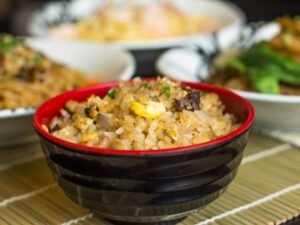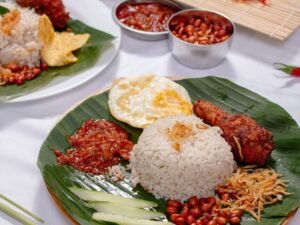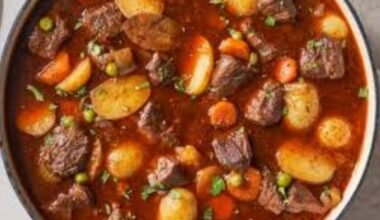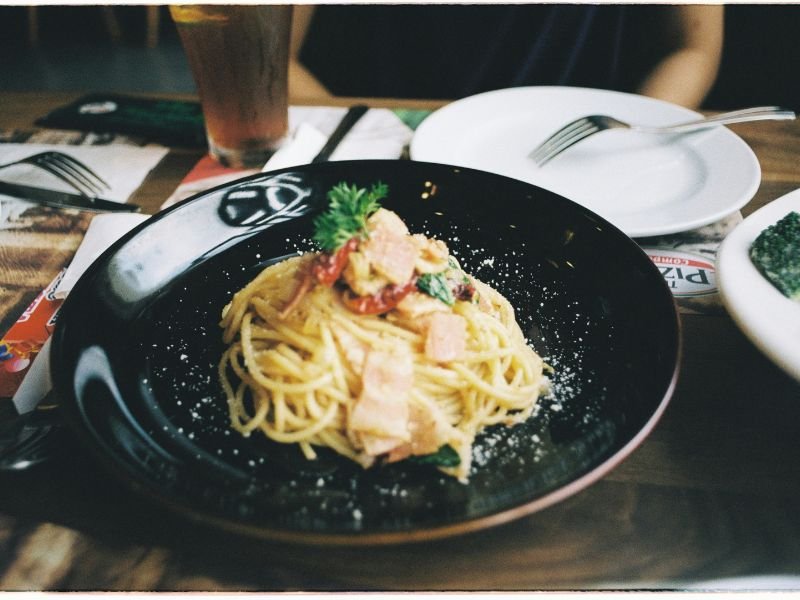Rice is a staple food for over half the world’s population—and for a good reason. It’s affordable, versatile, easy to store, and even easier to love. Whether you’re pairing it with a spicy curry, stir-fried veggies, or grilled protein, rice provides the perfect neutral base to soak up flavours.
But while it seems simple, cooking rice perfectly can be a challenge for many. Too mushy? Undercooked? Sticky clumps instead of fluffy grains? We’ve all been there. The good news: With just a few key techniques, you can make flawless rice every single time.
In this guide, we’ll walk you through everything you need to know—from choosing the right rice, to cooking methods, troubleshooting, and tasty serving ideas.
Why Rice? The Benefits of This Staple Grain
Before diving into the cooking process, let’s appreciate why rice deserves a regular spot on your dinner table:
-
Affordable & Accessible – Found in virtually every grocery store, rice is one of the most budget-friendly pantry staples.
-
Versatile – It complements everything from Asian stir-fries and Indian curries to Mediterranean stews and Latin American bowls.
-
Nutritious – Depending on the type, rice offers a good source of energy, fiber, and essential nutrients like B vitamins and magnesium.
-
Naturally Gluten-Free – A safe and satisfying carb option for those with gluten sensitivities or celiac disease.

Essential Ingredients & Tools
To start, here’s what you’ll need for a basic white rice recipe:
Ingredients:
-
1 cup long-grain white rice (substitute with jasmine, basmati, or short-grain if preferred)
-
2 cups water (ratios vary for other rice types—see below)
-
½ teaspoon salt (optional, enhances flavour)
-
1 tablespoon butter or oil (optional, prevents sticking and adds richness)
Equipment:
-
Medium-sized pot with a tight-fitting lid
-
Fine-mesh strainer (for rinsing rice)
-
Measuring cups
-
Fork or rice paddle (for fluffing)
Step-by-Step: Foolproof Stovetop Rice
Ready to get cooking? Follow these simple steps to achieve fluffy, delicious rice every time.
Step 1: Rinse the Rice
Why? Rinsing removes excess surface starch that can cause rice to clump or become gummy during cooking.
How to do it:
-
Place rice in a fine-mesh sieve or bowl.
-
Rinse under cold running water, stirring gently with your hand, until the water runs clear (usually 30–60 seconds).
Note: Skip this step if using pre-washed or instant rice varieties.
Step 2: Measure Water Correctly
The water-to-rice ratio is key to texture and doneness.
General guidelines:
-
White rice (long-grain): 1 cup rice to 2 cups water
-
Brown rice: 1 cup rice to 2.5 cups water (requires more time and liquid)
-
Jasmine/Basmati rice: 1 cup rice to 1.5 cups water (less water for firmer texture)
Step 3: Cook the Rice
-
Add rinsed rice, water, salt, and butter/oil (if using) to a pot.
-
Bring to a gentle boil over medium-high heat, uncovered.
-
Once boiling, reduce heat to low, cover tightly with the lid, and simmer for 15 minutes.
-
Resist the urge to lift the lid! Trapped steam is essential for even cooking.
Troubleshooting Tip: If water is boiling too hard, the rice may cook unevenly. Make sure to simmer gently on low heat.
Step 4: Rest & Fluff
-
After 15 minutes, turn off the heat, but do not remove the lid just yet.
-
Let the pot sit covered for 5–10 minutes. This final steaming step helps finish the cooking process.
-
Finally, remove the lid and fluff the rice gently with a fork to separate the grains.
Pro Tip: A rice paddle or silicone spatula also works well and is less likely to break the grains.

What You Get: Perfect Rice Every Time
-
Fluffy, individual grains
-
Evenly cooked texture—no crunch, no mush
-
A neutral, delicious base for any meal
Different Types of Rice & How to Cook Them
While the method above works well for white rice, here’s a quick cheat sheet for other popular varieties:
Common Rice Mistakes (and How to Fix Them)
Even the most experienced cooks occasionally run into rice troubles. If your rice hasn’t turned out the way you hoped, don’t worry! Here’s how to fix (and prevent) the most common rice mishaps:
Problem: Rice is Too Mushy or Gummy
What went wrong:
-
You likely used too much water or overcooked the rice.
-
Stirring during cooking can also activate too much starch, creating a gluey texture.
How to fix it next time:
-
Use the correct rice-to-water ratio based on rice type (see our cooking chart).
-
Avoid lifting the lid or stirring during cooking—this traps steam and allows the rice to cook evenly.
-
Try using a little oil or butter during cooking to help maintain texture.
Bonus Tip: If the rice is salvageable, turn it into rice pudding or blend it into a savory rice soup!

Problem: Rice is Undercooked or Crunchy
What went wrong:
-
There wasn’t enough water, or the cooking time was too short.
-
The heat may have been too low to bring it to a full simmer before you reduced it.
How to fix it:
-
Add 2–4 tablespoons of water, cover the pot again, and steam on low heat for 5–10 more minutes.
-
Let it rest for another 5 minutes after turning off the heat before fluffing.
Pro Tip: Always give rice the full resting time at the end—it finishes cooking in its own steam!
Problem: Rice Sticks to the Bottom of the Pot
What went wrong:
-
High heat or not enough oil/butter can cause the rice to stick.
-
Some pots don’t distribute heat evenly, leading to burning or sticking.
How to fix it:
-
Use a non-stick pot or a heavy-bottomed pan for better heat distribution.
-
Add a small amount of oil or butter to the water before cooking.
-
Stir once right after adding ingredients, then let it cook undisturbed.
Traditional twist: Some cultures enjoy crispy rice at the bottom (like Persian tahdig or Korean nurungji). You can intentionally create this with a bit of oil and controlled heat!
Delicious Ways to Serve Rice
Once you’ve nailed the technique, rice becomes a blank canvas for so many incredible dishes. Here are some popular (and easy) ways to turn that pot of fluffy rice into a show-stopping meal:
1. Stir-Fry Base
Quick, colourful, and endlessly adaptable!
How to serve:
-
Sauté chopped veggies like bell peppers, carrots, broccoli, and snap peas.
-
Add garlic, ginger, soy sauce, and your favourite protein (shrimp, tofu, chicken).
-
Toss in cold, day-old rice for the best texture and stir-fry over high heat.
Pro Tip: Cold rice is less sticky and easier to separate in the pan!
2. Build-Your-Own Rice Bowls
Great for meal prep or casual dinners with friends.
How to serve:
-
Start with a scoop of warm rice.
-
Add toppings like black beans, sautéed kale, grilled chicken, corn, avocado, tomatoes, and your favourite sauce (like tahini or chipotle mayo).
-
Finish with a squeeze of lime or a sprinkle of sesame seeds.
Make it fun: Set up a DIY rice bowl bar at your next gathering!
3. Pilaf-Style Rice
Fragrant and flavorful with minimal effort.
How to make:
-
Sauté rice in butter or olive oil with diced onions and minced garlic until slightly toasted.
-
Add water or broth and cook as usual.
-
Mix in spices like cumin, turmeric, or cinnamon and stir in toasted nuts or raisins at the end.
Try with: Middle Eastern dishes, grilled meats, or chickpea stew.
4. Fried Rice
The ultimate use for leftovers!
How to serve:
-
Scramble the eggs in a wok or pan.
-
Add chopped vegetables and cooked meat (optional).
-
Stir in cooked rice and season with soy sauce, sesame oil, garlic, and green onions.
Upgrade it: Add chili crisp, kimchi, or a fried egg on top for extra flair.
5. Sweet Rice Pudding
Perfect for dessert or breakfast.
How to make:
-
Combine cooked rice with milk (dairy or non-dairy), sugar or honey, cinnamon, and a pinch of salt.
-
Simmer gently until creamy.
-
Serve warm or chilled, topped with raisins, berries, or toasted coconut.
Bonus version: Add cardamom and rose water for a Middle Eastern-style pudding.

Other Creative Uses:
-
Stuffed Peppers: Mix rice with ground meat, herbs, and tomato sauce.
-
Soup Filler: Add a scoop of rice to brothy soups or stews.
-
Onigiri (Rice Balls): Shape sticky rice into balls or triangles and fill with tuna or pickled vegetables.
Bonus: Storing & Reheating Leftover Rice
Storage Tips:
-
Cool rice completely before transferring to an airtight container.
-
Refrigerate for up to 5 days, or freeze for up to 1 month.
Reheating:
-
Add a splash of water, cover with a damp paper towel, and microwave in 30-second bursts.
-
Or reheat on the stovetop with a bit of water over low heat, stirring occasionally.
Important: Never leave cooked rice at room temperature for more than 2 hours—bacteria can grow quickly!
Conclusion
Cooking perfect rice is one of the most rewarding and useful kitchen skills you can learn. It’s a humble grain, but when prepared right, it becomes the quiet star of many meals—soaking up sauces, adding texture, and filling bellies with warmth.
Now that you know the secrets—rinsing, measuring, steaming, and resting—you’re ready to cook rice like a pro. Whether you’re whipping up a quick weeknight dinner or preparing a feast, you’ll never have to second-guess your rice again.
Time to grab your pot and get cooking!







